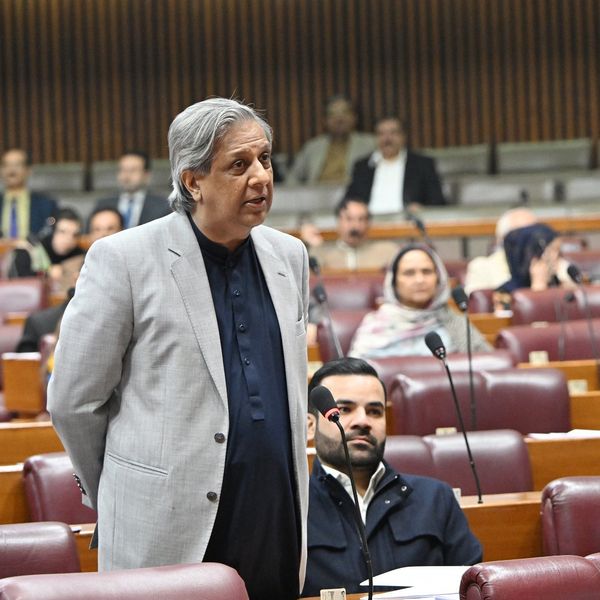What do Pakistan's T-bills auctions reveal?
While investor participation was high in the Aug 21 auction, it declined to a nine-month low in the Sept 4 one
The results of the Pakistan government's latest treasury bills (T-bills) auction on September 4 were unsurprising. But they were an important link in a trend that's been going on for the last few months.
And this auction's results when seen alongside the previous one's indicate something important: the market is sure that Pakistan's central bank will cut the interest rate further and has already incorporated it.
T-bills are short-term securities issued by the government and have tenures of three months, six months, and 12 months. They are one of the government's main tools for borrowing money and are considered to be low-risk investments since their profit payments are guaranteed by the government.
Every T-bill has a face value — the amount the government promises to pay the investor back after its tenure has matured (ended) — and it is sold to the investor at a discount, that is, for less than the face value. The difference between the price the investor purchases the T-bill at and the payment they receive from the government upon its maturity is the return (profit).
After the time for investors to submit bids has ended, a certain cut-off yield — the highest the government is willing to pay — is announced by the central bank which conducts the auction. All bids at or below the cut-off yield are then accepted. The cut-off yield depends on a country's interest rate, inflation, market sentiments and future expectations.
When the T-bill's tenure has matured, the investor is paid back the T-bill’s face value.
T-bills trends
Earlier this year, when inflation was still above 20% and the interest rate was at a record 22%, investors were flocking to the three-month papers since they offered the quickest way to make money.
However, once inflation started receding and the SBP cut the interest rate for the first time in nearly four years in June, investors started switching to the six-month and 12-month papers. Since the interest rate was still high but expected to go down in the long run, it made sense for them to lock in their profits for those periods.
While cut-off yields have been on the decline since September 2023, the reduction in the previous auction held on August 21 brought them to levels last seen 20 months ago.
The last two auctions
In the August 21 auction, investor participation was massive — they submitted bids totaling eight times the amount the government intended to raise.
They placed bids worth PKR 1,206 billion, with the highest interest in the 12-month bills which attracted PKR 524 billion. The six-month and three-month papers received bids of PKR 403 billion and PKR 279 billion, respectively.
The cut-off yield for the three-month bills saw the steepest decline, dropping by 148 basis points (bps) to 17.49% from 18.97% in the previous auction.
Meanwhile, the cut-off yields of six-month and 12-month papers fell by 101 and 74 bps, respectively, with the six-month paper at 17.74% and the 12-month paper at 16.99%.
The cut-off yields were at their lowest in 20 months, with the yields for the three-month and six-month bills last seen at this level in January 2023, and that for the 12-month bills in December 2022.
While investors submitted bids totaling two times the government's target in the September 4 auction, it was still the lowest participation in nine months.
However, what was similar to the previous auction was the interest in longer tenures, with 68% of the bids for six-month and 12-month papers.
Only the cut-off yield for the three-month bills declined marginally by 1bps.
The government successfully raised PKR 835 billion, surpassing the target of PKR 700 billion. The largest amount — PKR 468.42 billion — was raised through 12-month papers, followed by PKR 265.6 billion from six-month papers and PKR 101.22 billion from three-month papers.
Why were the results important?
Let's go back to the August 21 auction. Investors submitted lower bids and the cut-off yields declined more than expectations for a simple reason — the expectation that the State Bank of Pakistan (SBP) will reduce the interest rate further, and consequently, the cut-off yields will be slashed.
This was also why there was almost no change in the cut-off yields in the September 4 auction since investors had already anticipated and incorporated the expected rate reduction.
The SBP had raised the interest rate to a record high of 22% in June 2023 as the country's inflation skyrocketed. Even after it reduced the rate to 19.5% after a cut each in June and July this year, Pakistan's interest rate remains the highest in the region — India's rate is 6.5%, Bangladesh's 8.5% and Sri Lanka's 8.5%.
However, Pakistan's inflation has been easing consistently and dropped to the single-digit range in August for the first time in three years. This is primarily because of the high-base effect — inflation is measured by comparing the prices of specific items to their costs during the same period in the previous year. If the prices were already high like they were in 2023, then the difference in costs will not be too stark.
Other reasons include the exchange rate stability, improvement in the domestic food supply chain, and lower wheat and fuel prices.
Overall, inflation is expected to come down sharply in fiscal year 2024-25 to an average of 12.7%, according to the International Monetary Fund (IMF), compared to average inflation of 23.4% in FY24.
Positive real interest rate
The slowing inflation along with the SBP's decision to maintain a high interest rate means Pakistan's real interest rate turned positive six months ago.
The real interest rate is the nominal interest rate (announced by the central bank) minus the inflation rate. So, for instance, Pakistan's inflation in August was 9.6% while its interest rate was 19.5%, translating to a real interest rate of 9.9%.
A positive real interest rate essentially means that the government encourages consumers to save more rather than spend. Central banks often maintain positive real interest rates when their target is to control inflation.
However, high real interest rates can slow down economic activity due to the increased cost of borrowing, and Pakistan’s trade bodies including the powerful All Pakistan Textile Mills Association have been asking for a reduction in the interest rate.
Given the wide gap between Pakistan's interest rate and real interest rate, there is significant room for its central bank to reduce the nominal interest rate while keeping the real interest rate positive.
In fact, a look at the historical trend of real interest rates in Pakistan shows that the current one is much higher than the long-term average.
Pakistani banks and international rating agencies such as Fitch Ratings expect the SBP to slash the interest rate to 16% by December.
With August inflation at a three-year low and the widening gap between the nominal and real interest rates, there is a broad expectation that the SBP will cut the interest rate by around 150bps in its meeting on September 12. And that is what these last two auctions indicated.












Comments
See what people are discussing